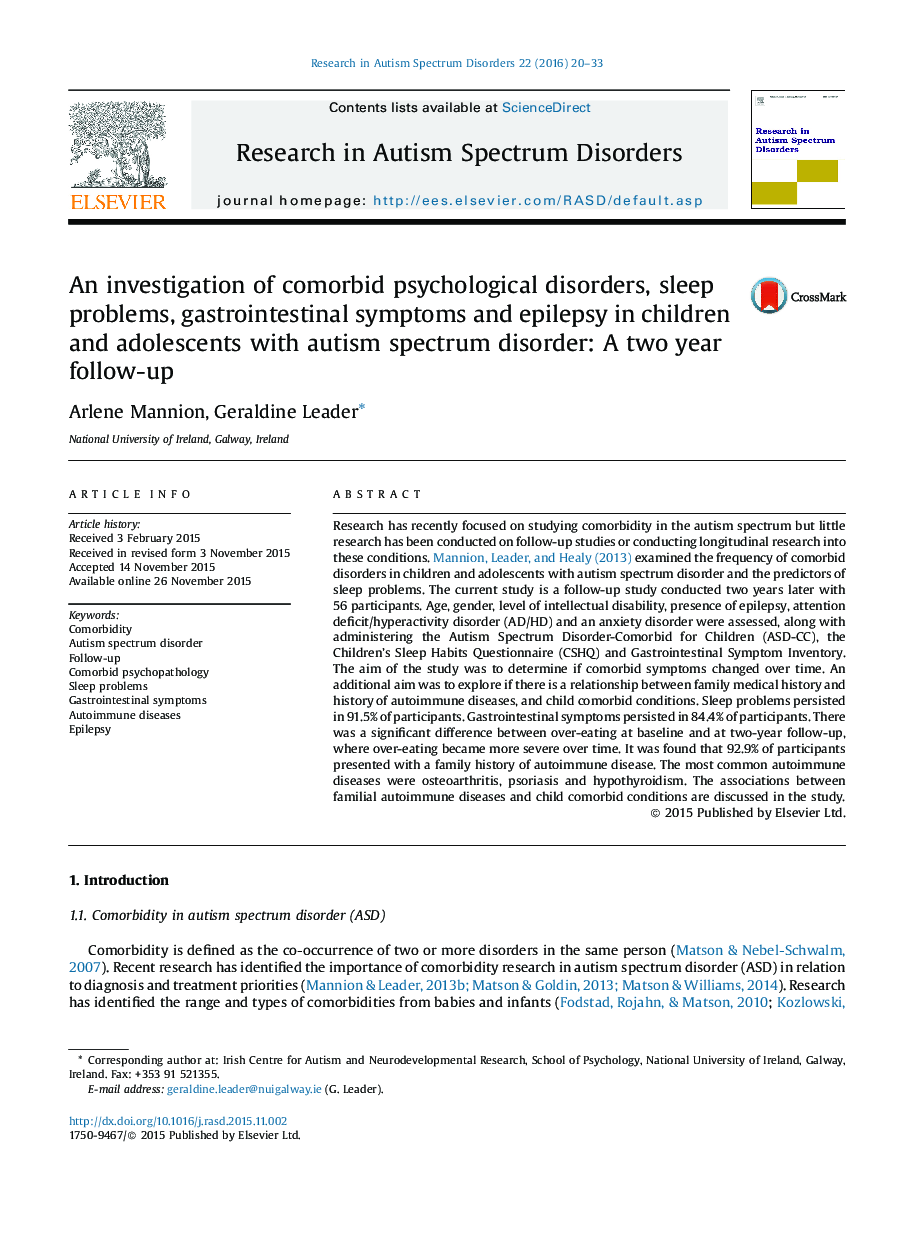| Article ID | Journal | Published Year | Pages | File Type |
|---|---|---|---|---|
| 369986 | Research in Autism Spectrum Disorders | 2016 | 14 Pages |
•We conducted a two year follow up study to investigate comorbid disorders.•Sleep problems persisted in 91.5% of participants.•Gastrointestinal symptoms persisted in 84.4% of participants.•Over-eating became more severe over time.•92.9% of participants presented with a family history of autoimmune disease.•The associations between familial autoimmune diseases and child comorbid conditions are discussed.
Research has recently focused on studying comorbidity in the autism spectrum but little research has been conducted on follow-up studies or conducting longitudinal research into these conditions. Mannion, Leader, and Healy (2013) examined the frequency of comorbid disorders in children and adolescents with autism spectrum disorder and the predictors of sleep problems. The current study is a follow-up study conducted two years later with 56 participants. Age, gender, level of intellectual disability, presence of epilepsy, attention deficit/hyperactivity disorder (AD/HD) and an anxiety disorder were assessed, along with administering the Autism Spectrum Disorder-Comorbid for Children (ASD-CC), the Children’s Sleep Habits Questionnaire (CSHQ) and Gastrointestinal Symptom Inventory. The aim of the study was to determine if comorbid symptoms changed over time. An additional aim was to explore if there is a relationship between family medical history and history of autoimmune diseases, and child comorbid conditions. Sleep problems persisted in 91.5% of participants. Gastrointestinal symptoms persisted in 84.4% of participants. There was a significant difference between over-eating at baseline and at two-year follow-up, where over-eating became more severe over time. It was found that 92.9% of participants presented with a family history of autoimmune disease. The most common autoimmune diseases were osteoarthritis, psoriasis and hypothyroidism. The associations between familial autoimmune diseases and child comorbid conditions are discussed in the study.
